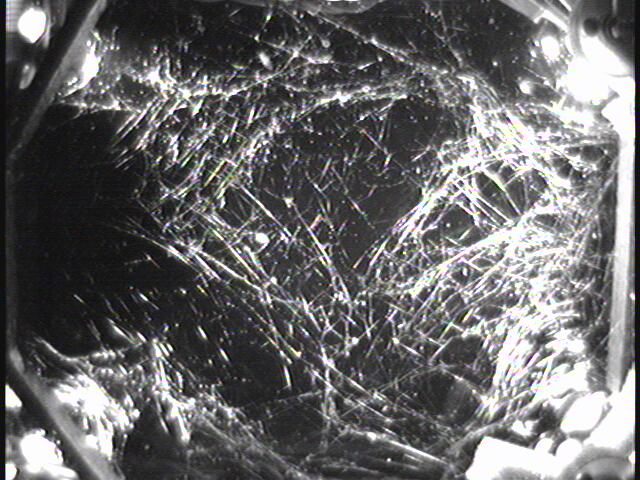A tool bag floated away in space as spacewalking astronauts worked outside the International Space Station Tuesday. Heide Stefanyshyn-Piper had a grease gun explode inside her tool bag, getting the dark gray goop all over a camera, the inside of the bag, and her gloves. While she was trying to clean it up, the whole bag floated away. "Oh, great," Piper said. It was one of the largest items ever to be lost by a spacewalker. Lost were two grease guns, needed to clean and lube the jammed Solar Alpha Rotary Joint for the space station's solar arrays. Flight director Ginger Kerrick said the bag and also an errant screw that also floated past that spacewalkers posed no hazards to the ISS or shuttle. By late Tuesday, the bag was already well away from the complex, about 2.5 miles (4 km) in front of the shuttle-station complex. The rest of the spacewalk went well, as Piper and her partner Stephen Bowen shared tools and accomplished all the planned objectives. Mission planners are studying options for replacing, or doing without, two grease guns lost.
Also lost is one of two spiders on board
a special experiment…
While one orb weaver spiders weaved away in an ususual unsymmetrical manner, one spider is MIA. "We don't believe that it's escaped the overall payload enclosure," said Kirk Shireman, NASA's deputy station program manager. "I'm sure we'll find him spinning a web sometime here in the next few days."
"The web was more or less three-dimensional and it looked like it was all over the inside of the spider hab," said NASA astronaut Sandra Magnus, the space station's science officer. "We took some pictures of it." And here's an image: [/caption]
Painted lady butterfly larvae were also included as a separate part of the experiment.
Students will compare the space butterflies' lifecycle and how the spiders weave webs and feed in weightlessness with similar spiders and butterflies on Earth.
Also inside the station, astronauts moved two 1,700-pound (770 kg) water recycling racks into the Destiny lab module, as well as combustion research gear, and a new toilet and crew sleep stations.
The water recycling gear, which will convert condensate and urine into pure water for drinking, food preparation, hygiene and oxygen generation, is crucial for NASA's plans to boost the station's crew size to six next year. The astronauts hoped to hook up the two water processing racks today (Wednesday) and to begin pumping stored urine into the system Thursday.
Water samples will be returned to Earth aboard Endeavour for detailed chemical analysis. A full three months of testing is planned in orbit, with additional ground tests after the next shuttle visit in February, before any astronauts are allowed to drink the recycled water.
Sources:
MSNBC,
UPI
 Universe Today
Universe Today
